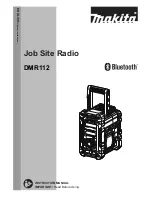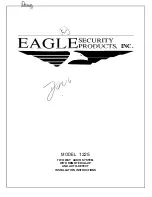
26 | About the Radio
Aprisa SR+ User Manual 1.11.1
Product Overview
Network Coverage and Capacity
The Aprisa SR+ has a typical link range of up to 120 km, however, geographic features, such as hills,
mountains, trees and foliage, or other path obstructions, such as buildings, will limit radio coverage.
Additionally, geography may reduce network capacity at the edge of the network where errors may occur
and require retransmission. However, the Aprisa SR+ uses 10W output power and Forward Error Correction
(FEC) which greatly improves the sensitivity and system gain performance of the radio resulting in less
retries and minimal reduction in capacity.
Ultimately, the overall performance of any specific network will be defined by a range of factors including
the RF output power, the modulation used and its related receiver sensitivity, the geographic location, the
number of remote radios in the base station coverage area and the traffic profile across the network.
Effective network design will distribute the total number of remote radios across the available base stations
to ensure optimal geographic coverage and network capacity.
One base station can register and operate with up to 500 remote / repeater stations.
The practical limit of remote / repeater stations that can operate with one base station is determined by a
range of factors including the number of services, the packet sizes, the protocols used, the message types
and network timeouts.
Automatic Registration
On start-up, the remote radio transmits a registration message to the base station which responds with a
registration response. This allows the base station to record the details of all the remote radios active in
the network.
If a remote is not able to register with base station in 5 attempts, then a ‘Network Configuration Warning’
alarm event will be raised indicating that a remote is not registered with the base station. If a remote radio
cannot register with the base station after 30 minutes, it will automatically reboot.
If a remote radio has registered with the base station but then loses communication, it will automatically
r
eboot 30 minutes after the ‘Remote Communications Lost’ alarm event. If the remote communications lost
alarm is disabled, the remote will not reboot.
Remote Messaging
There are two message types in the Aprisa SR+ network, broadcast messages and unicast messages.
Broadcast messages are transmitted by the base station to the remote radios and unicast messages are
transmitted by the remote radio to the base station. These messages are commonly referred to as uplink
(unicast remote to base) and downlink (broadcast base to remote).
All remotes within the coverage area will receive broadcast messages and pass them on to either the
Ethernet or serial interface. The RTU determines if the message is intended for it and will accept it or
discard it.
Summary of Contents for Aprisa SR+
Page 1: ...January 2021 Version 1 11 1b ...
Page 2: ......
Page 10: ......
Page 72: ......
Page 86: ......
















































